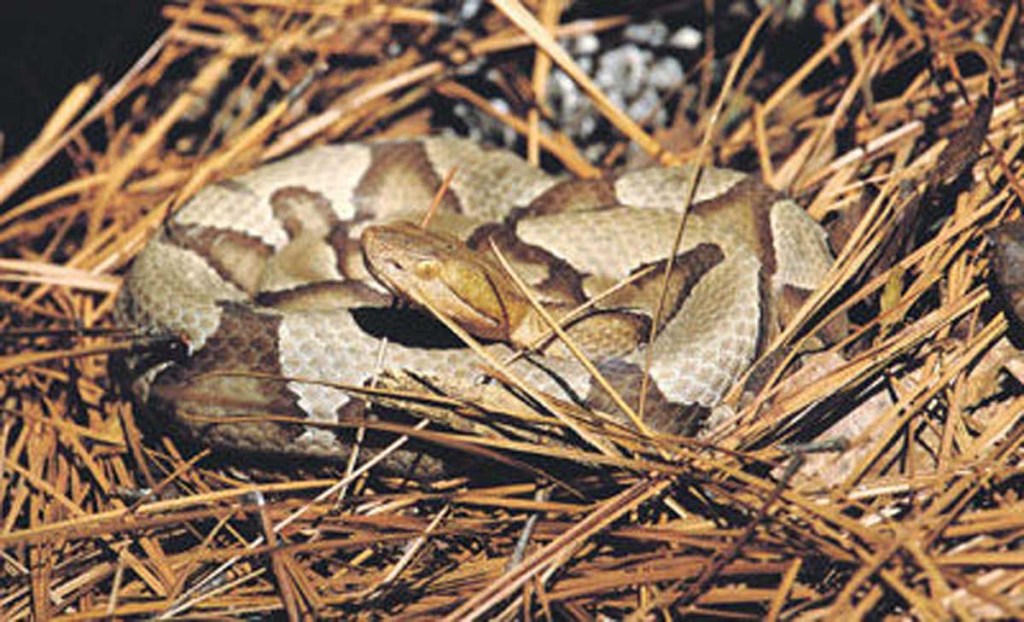Dangerous season: Ticks, snakes, high temps bring summer risks
Published 5:05 am Wednesday, July 10, 2019

- Copperhead snake
Summer’s long days and high temperatures bring three potentially dangerous issues for anyone spending time outdoors.
While the season brings the opportunities for more activities, this is also the season of heat-related illnesses, snakes and ticks.
The Cullman Regional Emergency Department, since April has treated 50 patients for tick bites, 40 for heat-related illnesses and four for snake bites. None of the snake bites required administration of CroFab (antivenom), which means the bites were either non-poisonous snakes or “dry bites” (no venom was released).
While snakes leave plenty to worry about at times, ticks create some of the most troubling encounters for humans and animals.
“Just about every species of ticks, but maybe two, can be found here,” said Lindsey Dossey, vice president of marketing and public relations at Cullman Regional. “With ticks, it’s important if you find one on you to get to the emergency department to have it removed. The same is true with snake bites. The hospital always has anitvenom.”
Emergency Department Manager Chad Knop said knowing where to expect ticks can offer some help in avoiding the unwelcome passengers.
Ticks live in grassy, brushy, or wooded areas, or even on animals. Spending time outside walking your dog, camping, gardening, or hunting could bring you in close contact with ticks. Many people get ticks in their own yard or neighborhood, he noted.
Clothing and gear can be treated with products containing 0.5 percent permethrin. Permethrin can be used to treat boots, clothing and camping gear and remain protective through several washings. Alternatively, you can buy permethrin-treated clothing and gear.
Common ticks found in the area include:
— American Dog Tick: highest risk of being bitten occurs during spring and summer.
— Blacklegged Tick: greatest risk of being bitten exists in the spring, summer, and fall. However, adults may be out searching for a host any time winter temperatures are above freezing.
— Brown Dog Tick: Dogs are the primary host for the brown dog tick in each of its life stages, but the tick may also bite humans or other mammals.
— Gulf Coast Tick: Found mostly in coastal areas of the U.S. along the Atlantic coast and Gulf of Mexico.
— Lone Star Tick: Among the most aggressive ticks that bites humans. The adult female is distinguished by a white dot or “lone star” on the back. Lone star tick saliva can be irritating; redness and discomfort at a bite site does not necessarily indicate an infection.
All of the ticks potentially can transmit diseases that require extensive medical treatment.
Poisonous snakes in the are include copperheads, rattlesnakes, cottonmouths and coral snakes. However, non-poisonous snake bites should not be ignored because they can lead to infection, according to information provided by Cullman Regional.
Snakes can be found just about anywhere, from the water to hiding under debris or tall grass. Avoiding a snake that you see is the best way to avoid a bite.
With high temperatures and deadly heat index readings, the most serious threat to anyone outdoors is heat stroke, which is a medical emergency that demands immediate action, according to the hospital’s information.
“We’re looking at high temperatures and heat indexes for most or all this week,” Dossey said. “Staying hydrated and taking breaks are important. We have several tips on getting through this type of weather.”
The signs of heat stroke include: high body temperature (103°F or higher), Hot, red, dry, or damp skin; fast, strong pulse; headache; dizziness; nausea; confusion; losing consciousness (passing out)
Once the signs are recognized call 911 right away; move the person to a cooler place; help lower the person’s temperature with cool cloths or a cool bath; do not give the person anything to drink.





